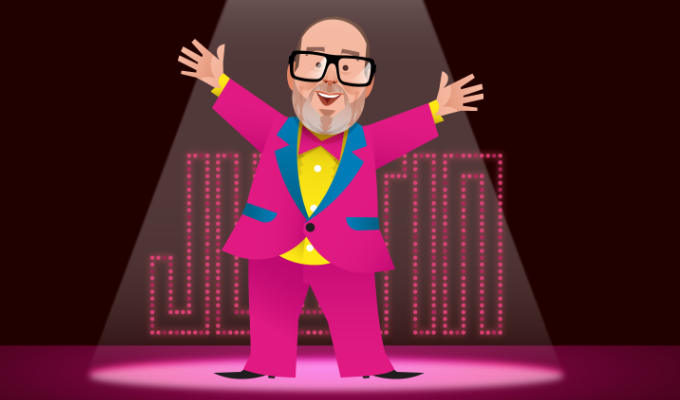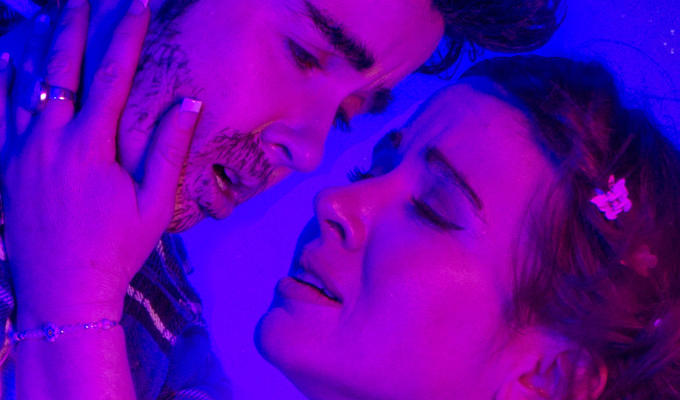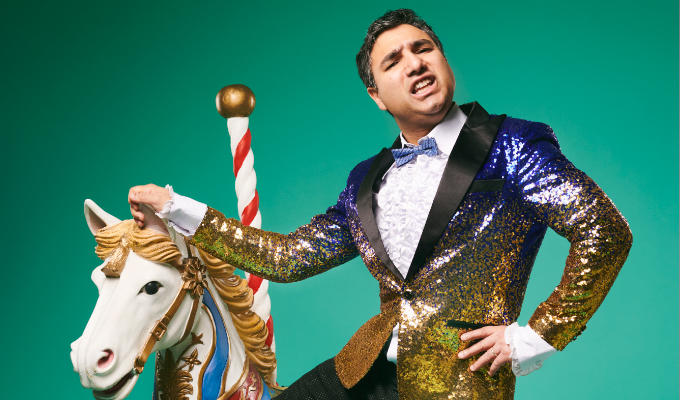Crazy about the Gang
Matthew Coniam pays tribute to the brilliant sextet who set the music hall alight
In 1962, John Betjeman wrote an affectionate poem about the many hours he spent ‘as peanuts cracked, with my tie askew and my waistcoat undone’ in London’s music halls. It was written to commemorate the last ever appearance of the Crazy Gang. ‘Goodbye, old friends of the great tradition!’ he writes.There is a long and extensive history of opposition to the Gang’s style of music hall comedy, usually fixated upon its bawdiness. I do not intend to waste too much time mounting a defence of earthiness as a tradition in British humour. The point I’d rather make is that there is much, much more to the Crazy Gang than end-of-the-pier sauce.
They are incorrigible lechers, to be sure, ready to drop anything to follow a passing girl, or happy to hide in a manhole and look up women’s skirts, only to come unstuck when a Scotsman passes by. But to write them off as six Benny Hills hardly does justice to the frantic pace, the sheer energy of the performers, and the modern feel of the absurdism in their humour, which runs parallel to that of the Marx Brothers and clearly anticipates the Goons.
The six core members of the Crazy Gang were, in fact, three discrete double-acts first brought together in 1932 by Chaplin’s mentor Fred Karno to star in his Palladium revue Laffs.
First to sign were Nervo & Knox and Naughton & Gold. The latter were a pretty orthodox arrangement of patter comic Charlie Naughton, a round-faced innocent with infantile logic, and Straight Man Jimmy Gold, good at his job but the least distinctive member of the Gang. The former were a more equal-footed pairing of eccentric comics: Jimmy Nervo, who’s often in drag and possessed of great physical dexterity, and Teddy Knox, who dressed dapper and, when given the chance, proved the most versatile and gifted of them all.
In this first appearance they were joined by ‘Monsewer’ Eddie Gray, an eccentric juggler with a clip-on moustache giving to spicing his stage patter with ‘franglais’.
The show mutated into the loose-structured Palladium Crazy Week, where the Gang were joined by Bud Flanagan and Chesney Allen, by a clear lead the most famous today, as well as at the time. They were most definitely comic and straight man, reinforced by the fact that Allen is smartly-dressed, refined and soft-spoken, Flanagan boisterous, scruffy and plebeian. Though he lived longer than any other member of the team, Allen retired for reasons of ill health in the mid-Forties, after which Flanagan carried on with no adverse effects and the Gang was joined on a more or less permanent basis by Eddie Gray.
Their routines were composed largely of Abbott and Costelloish cross talk, with Ches struggling to impart information and Bud seemingly determined to misconstrue even the simplest verbal formulations. But the true reason for their success was their habit of launching into sweet-natured schmaltzy songs, delivered in a gentle lilt by Flanagan and an odd, robotic monotone by Allen. In this guise, especially during the war years, they delighted audiences with such hits as Underneath the Arches, Umbrella Man and Run, Rabbit, Run.
They do a lot of punning. Countless routines run to this formula:
Bud: I went to the opera; I saw Friendly Joe.
Ches: Friendly Joe?
Bud: Chummy Dick.
Ches: Chummy Dick?
Bud: Pally Archie.
Ches: Pagliacci!
Both: Pagliacci! Oi!
Audience:Oi! (This call-and-response ‘oi!’ became a Gang trademark and catchphrase.)
While the three acts dispensed basically traditional music hall material on their own, when all six men got together they morphed into an animal possessed of qualities far greater than the sum - and no stage, or screen, ever proved quite big enough for what was unleashed.
Their comedy relies on pace, and rapid transitions between wordplay, slapstick and farce, their physical comedy was often highly elaborate and acrobatic, their verbal comedy often extremely clever, just as often groaningly corny.
With six of them at it at the same time, there was frequently more going on than could be fully taken in, resulting in a kind of sustained delirium that, once up and rolling, gave audiences little time to breathe between laughs. For this reason, there is little doubt that what we see of them on film, through technical necessity as much as anything, simply cannot be the full-strength entertainment enjoyed by stage audiences when they were firing on all cylinders. But then, this is just as true of the Marx Brothers. The Crazy Gang’s films, all things considered, are far more hilarious than we have any right to expect.
Put any stage comic into a movie and some attempt must be made to characterise them. The most effective tend to be those whose stage character lends itself most easily to this conversion. It’s more difficult when the character is a cocky wisecracker, as the various attempts to provide Max Miller with a screen persona showed.
When all else failed, the character was made a stage performer himself, allowing the comic to comment sardonically from the sidelines as the plot unspools around him. But when there are six of them, even this becomes a logical impossibility. There is simply no way of keeping six noisy comics edge of frame while conventional plots unfold in the middle. So the admirable decision was made to let the Crazy Gang be forces of nature.
Like the Marxes in their earliest and best films they are placed in a realistic fictional narrative yet never quite integrate into it, as if they have landed from some indefinite elsewhere. No convincing characterisation is offered or necessary; they are simply let loose, their job to pull rugs, blow raspberries, deflate authority and generally clog the wheels of genteel society.
They are also the most British of British comics, Marx Brothers parallels notwithstanding. Other countries, even other English-speaking countries, must have found them utterly incomprehensible. These were films made openly and unapologetically for their home crowd alone.
In four major movies, two of them masterpieces and two of them merely exceptionally good, the Gang offered the closest thing the British screen ever came to sheer comic anarchy. Their screen debut, and masterpiece number one, was Okay For Sound (1937), basically a ragbag of disconnected routines taken directly from their revues.
The plot, such as it is, lets them wangle their way into an ailing film studio, causing various kinds of chaos. It’s open house for a rich assortment of Thirties variety turns, while the Gang assume a variety of different roles in free-standing comic sketches in addition to the usual knowingly ancient music hall puns and wheezes, slapstick, cross talk and gentle songs.
Here are two clips from Okay For Sound:
Masterpiece number two is Alf’s Button Afloat (1938), an update of W. A. Darlington’s farce about a soldier whose uniform button is Aladdin’s lamp melted down, still with genie, who appears every time the button is rubbed. In this version Bud is Alf and Alf is a sailor. The genie is Alistair Sim, in a brazen, assured, perfectly judged bit of extreme comic acting.
Initially intoning his lines in traditionally archaic genie fashion, he is sent to the cinema to catch up on modern mores and speech, and returns doing a brilliantly observed pastiche of the actors in American gangster films. Sim’s delivery is hilariously well observed, and he keeps it up for ages.
Since the genie can grant them any wish, the happy result is a plot in which anything can happen, especially since the genie is inclined to mishear, misconstrue, or otherwise not quite deliver what is expected of him. So again, we are given a narrative in which otherwise irrelevant routines can be easily inserted. The best of these is probably the opera-miming sketch, truly one of the funniest things I have ever seen in my life.
Elsewhere there is much fast, Groucho-style wordplay, a very funny court martial scene (evoking Duck Soup), Knox’s glorious aristocratic gibberish, and an ending that has the film’s two young lovers eaten by a bear.
Their other two films are more tightly reined narrative comedies, but still suffused with hugely memorable moments. The Frozen Limits (1939) casts them as itinerant entertainers who travel to the Yukon. While in Gasbags (1941), they play soldiers who run an illegal fish and chips stall attached to a barrage balloon which ends up floating over Germany. Once landed, they end up in a concentration camp full of professional Adolf Hitler lookalikes.
After these movies the Gang went back to the boards, and to a record-breaking permanent residency at the Victoria Palace from 1946 to 1960.
During this time they did make one last film. Life Is A Circus (1958) is, according to all sources, lamentably bad. I’ve not seen it, but a large part of the adverse criticism does seem to be informed by an outrage at the effrontery of old men daring to be funny.
But we know they were not ‘past their prime’ because they occasionally transferred some of this material to television. Friday Night With The Crazy Gang (1956) was produced for Associated-Rediffusion, and it’s terrific. Little attempt was made to tailor their act to television, each show looking like it had been shot from the stalls, but the programme effectively conveys the Gang’s breathless pace. Usually modern audiences must make some adjustment for the more sedate tempo of Fifties TV, but these boys need no special handling. They maintain a frantic barrage of corny gags, puns, visual jokes, vulgarity and topical references. As usual, some of the jokes seem fairly risqué for the time, as when a woman explains that she concealed her emeralds in her bustle during a highway robbery and is met with the observation ‘Pity your mother wasn’t here, she might have saved the cart.’ The breakneck tempo of their routines is in no way compromised by their advancing age.
The Crazy Gang never went out of date because they, rather than their act, were the point. Like Morecambe and Wise they transcended their own material to become an institution in their own right, and so lasted beyond the point at which they would otherwise have been deemed passé.
Their reputation has endured, but mainly among connoisseurs rather than in popular memory. This is a pity, since while it means their unique and genuinely important contribution to stage and screen humour will never be forgotten, it looks like the intense, waistcoat-straining pleasure they gave more or less has been.
Published: 10 Sep 2007






